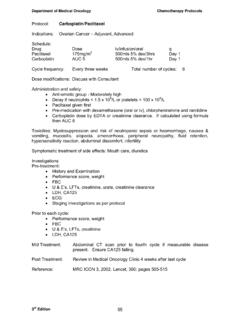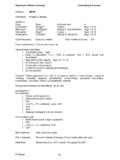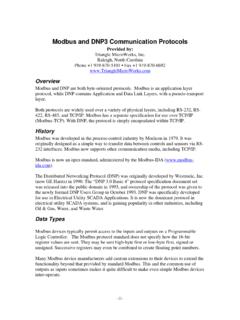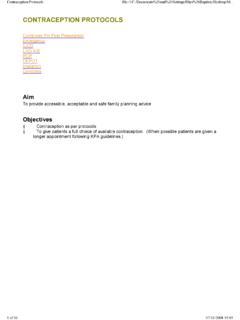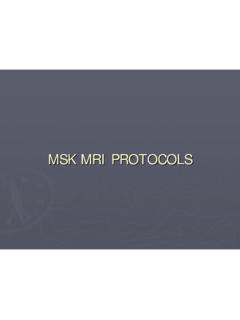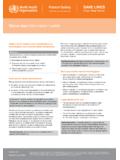Transcription of Clinical Pharmacy Guide: Chemotherapy …
1 Clinical Pharmacy guide : Chemotherapy assessment and Review 4th Edition understanding BC cancer agency Chemotherapy Protocols Activated: September 2014 Revision Date: October 4, 2017 1 understanding BC cancer agency Chemotherapy Protocols Contents Introduction .. 2 Purpose of protocol Codes .. 3 Patient Safety .. 3 Evidence-based Treatment .. 3 Accountability .. 3 protocol Code Format .. 3 Absence of a protocol Code .. 5 Absence of a Treatment protocol .. 6 Benefit Status .. 6 Class I Drugs .. 7 Class II Drugs .. 8 Compassionate Access Program (CAP) Drugs .. 8 Special Access Program (SAP) .. 8 Clinical Pharmacy guide : Chemotherapy assessment and Review 4th Edition understanding BC cancer agency Chemotherapy Protocols Activated: September 2014 Revision Date: October 4, 2017 2 Introduction In order to provide safe, evidence-based, and cost-effective cancer treatment to all cancer patients in , the BC cancer agency has developed cancer treatment regimens or Chemotherapy protocols.
2 There are more than 350 different protocols approved for use by the BC cancer agency . Summaries of these protocols can be found on the BC cancer agency website ( ) under Chemotherapy Protocols. Each protocol summary contains the following information: protocol code Tumour group Eligibility and exclusion criteria Tests (baseline tests and ongoing Clinical and laboratory monitoring) Premedications Treatment (including drug(s), dose, route of administration, length and number of cycles) Dose modifications (potential toxicities and response) Precautions BC cancer agency contact physician Date of last revision References It is important to note that the Provincial Systemic Therapy Program of the BC cancer agency reviews and revises these protocols on a periodic basis and that both the format and content of the protocols may change. Therefore, printed copies of protocols should not be stored for future reference, as they may soon be out of date.
3 The last revision date is shown at the end of each protocol summary. Always check the BC cancer agency website for the most recent information. Clinical Pharmacy guide : Chemotherapy assessment and Review 4th Edition understanding BC cancer agency Chemotherapy Protocols Activated: September 2014 Revision Date: October 4, 2017 3 Purpose of protocol Codes Patient Safety The unique protocol code allows accurate communication within the health care team to readily identify the treatment prescribed for a patient. This is important given that Chemotherapy often involves complex dosing schedules of drugs with potentially severe toxicities. In addition, the BC cancer agency Chemotherapy protocols have corresponding BC cancer agency preprinted orders (PPO s) and patient information handouts. Use of the protocol codes assist other members of the health care team involved in Chemotherapy delivery to have the necessary information to perform Clinical checks and provide the safest possible patient care.
4 Evidence-based Treatment The BC cancer agency Chemotherapy protocols have been developed based on the latest evidence related to management of specific cancers. By capturing BC cancer agency protocol information, the BC cancer agency is able to track outcome data for specific patient populations treated with specific protocols in BC. This information further informs clinicians regarding treatment efficacy. Accountability BC cancer agency protocol data is also used to obtain valuable information for monitoring and forecasting related to drug therapy usage with the intent of making evidence-based drug therapies available for BC residents through effective management of the oncology drug budget. protocol Code Format Each protocol is assigned a specific code, which is formatted as follows: The first two letters indicate the tumour group (see Table 1). If a tumour group has more than one site, the tumour site may be included.
5 For example, ovarian cancer protocol codes begin with GOOV ( GO for gynecology tumour group, OV for ovarian cancer ). The protocol code may identify if the treatment is adjuvant (AJ) or Clinical Pharmacy guide : Chemotherapy assessment and Review 4th Edition understanding BC cancer agency Chemotherapy Protocols Activated: September 2014 Revision Date: October 4, 2017 4 advanced (AV). In general: o Adjuvant treatment is given after curative treatment (radiation or surgery) to reduce risk of disease recurrence and improve survival. o Advanced treatment intent is palliative and generally used to control progression or symptoms of metastatic or unresectable disease. The first one to three letters of the drug(s) used in the protocol usually complete the protocol code. Some Class I drugs do not have BC cancer agency protocols associated with them or may be used as single agent treatment.
6 These drugs are indicated on the Benefit Drug List [Systemic Therapy - Reimbursement & Forms] by the default code NOS which stands for Not Otherwise Specified . The order will be assigned a protocol code following the format XXNOS where the XX is substituted with the tumour site being treated. Table 1: Tumour Group Abbreviations BR breast LU lung BMT bone marrow transplant LY lymphoma CN central nervous system/neuro-oncology MY myeloma CML chronic myeloid leukemia SM melanoma GI gastrointestinal MO miscellaneous origins GU genitourinary OC ocular GO gynecology PU primary unknown HN head and neck SA sarcoma KS Kaposi s sarcoma SC supportive care LK leukemia U * protocol requires CAP approval * U is for undesignated and is added before the tumour group abbreviation to indicate that the protocol requires case-by-case approval for funding through the Compassionate Access Program (CAP).
7 Example: The BC cancer agency protocol Summary for Adjuvant Therapy for Breast cancer using DOXO rubicin and Cyclophosphamide has the protocol code BRAJAC. This indicates that it is a breast cancer protocol involving adjuvant therapy using ADRIAMYCIN (DOXO rubicin) and cyclophosphamide. Clinical Pharmacy guide : Chemotherapy assessment and Review 4th Edition understanding BC cancer agency Chemotherapy Protocols Activated: September 2014 Revision Date: October 4, 2017 5 Every attempt is made to have protocols follow this general pattern, but there are variations: Not every protocol code identifies the intent of treatment ( , whether it is adjuvant or advanced ). Most protocol codes use generic drug names, but occasionally brand names are used instead ( , ADRIAMYCIN in BRAJAC).
8 A number of protocol codes do not follow the BC cancer agency format for nomenclature but have been adopted because the acronyms were widely used and predated BC cancer agency protocols. More examples: LUMMPG is a lung protocol for malignant mesothelioma using platinum (CISplatin) and gemcitabine. BRAVANAS is a breast protocol for advanced disease using anastrozole. LYHDMTXP is a lymphoma protocol using high-dose methotrexate (MTX), for the treatment of primary intracerebral lymphoma. GIFOLFIRI is a gastrointestinal protocol using folinic acid, fluorouracil, and irinotecan. UGUPCABA is a genitourinary prostate protocol using cabazitaxel and predniSONE and requiring case-by-case approval prior to treatment. LKNOS is the protocol code used for hydroxyurea treatment for any leukemia. There is no specific protocol for hydroxyurea for any tumour group. When a Chemotherapy order is written, a specific protocol code must accompany the order to allow the pharmacist to check the written order.
9 It is important to check that the protocol ordered is consistent with the patient s diagnosis and eligibility criteria. If it is not, the pharmacist must contact the ordering physician to clarify any discrepancies. Absence of a protocol Code When the protocol code is absent from the orders, the pharmacist should follow the guidelines below to obtain this essential information: If this is the patient s first treatment, contact the ordering physician to confirm which BC cancer agency approved protocol is being used for treatment. Ensure that the patient s diagnosis is consistent with the assigned protocol by following the eligibility criteria outlined in the Clinical Pharmacy guide : Chemotherapy assessment and Review 4th Edition understanding BC cancer agency Chemotherapy Protocols Activated: September 2014 Revision Date: October 4, 2017 6 protocol .
10 If the patient has been previously treated, check that the current orders are consistent with the previous protocol . The protocol code for the previous cycle can then be assigned to the Chemotherapy orders, and the pharmacist should follow the previous protocol for checking the Chemotherapy orders. Absence of a Treatment protocol There are three possible sources of protocol codes: 1. CAP outcomes 2. Chemotherapy Protocols 3. the Benefit Drug List [Systemic Therapy - Reimbursement & Forms] When an XXNOS or CAP-assigned protocol code is used, there is no protocol to guide checking the Chemotherapy order for eligibility, dosing, and appropriateness of treatment. It must be determined whether the treatment is suitable for the patient from other sources of information. These include: cancer Management Guidelines Other Chemotherapy regimen resources Literature support for proposed treatment CAP-assigned protocols sometimes refer to another protocol that can be used for guidance Benefit Status The BC cancer agency pays for the cost of all approved cancer treatment medications for all residents of BC.










